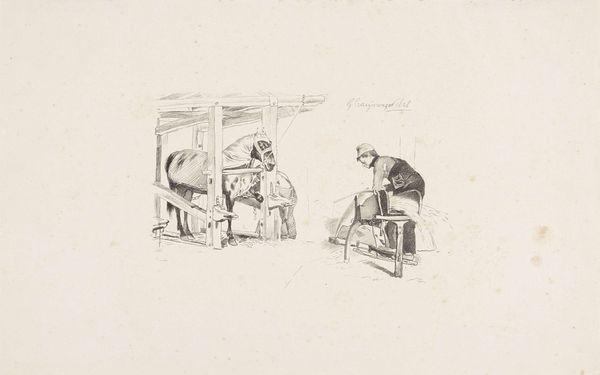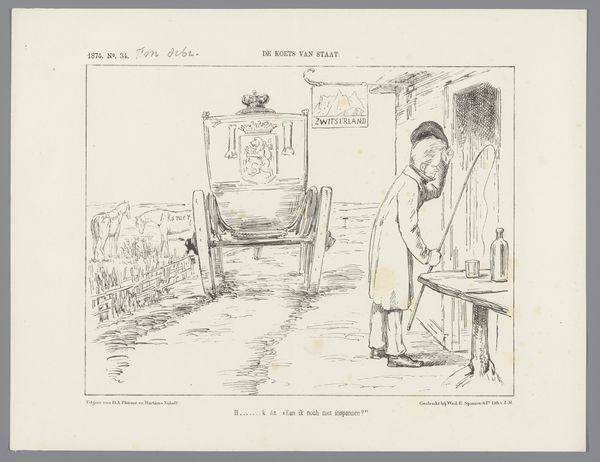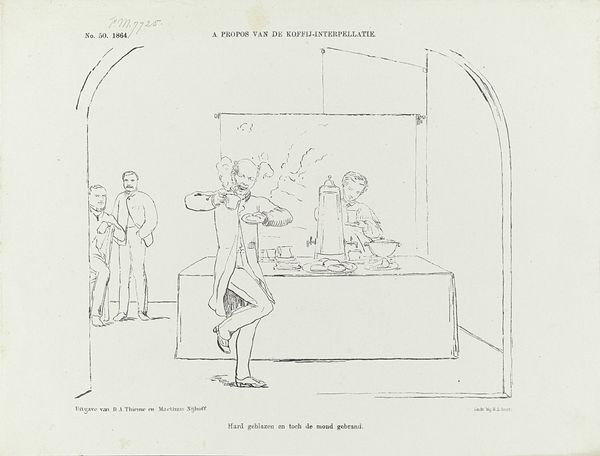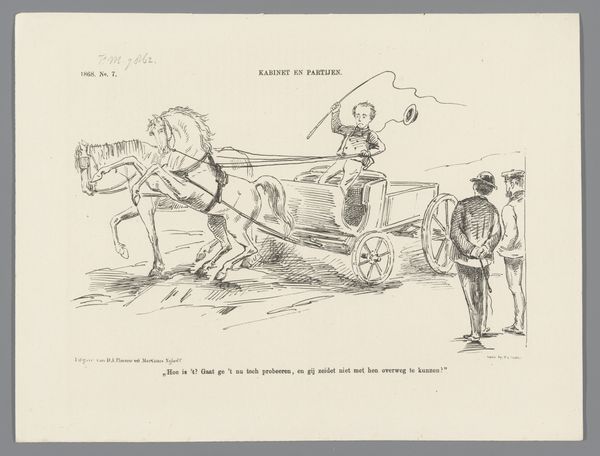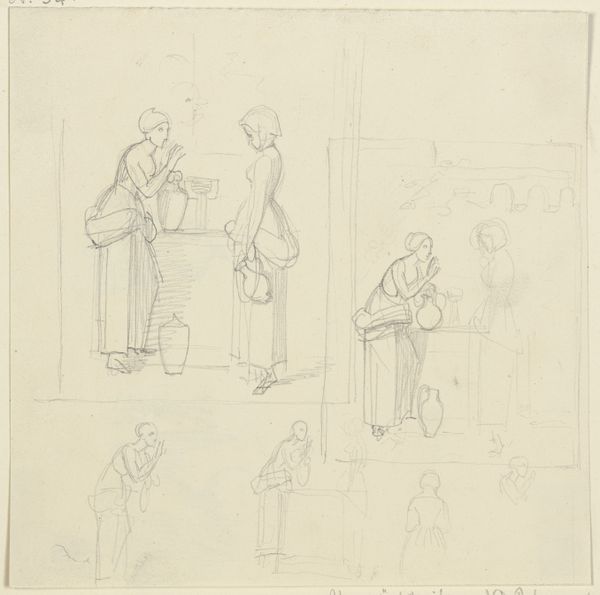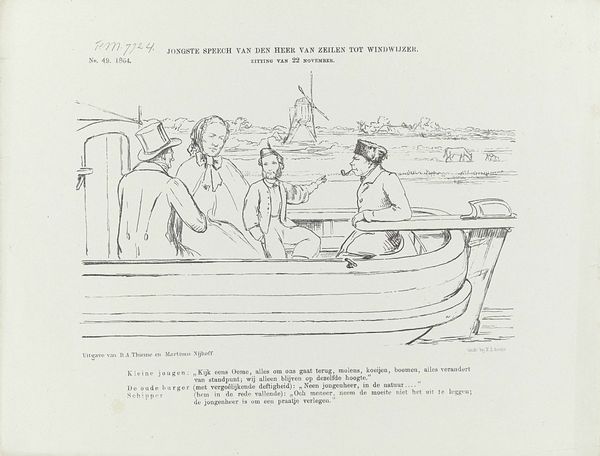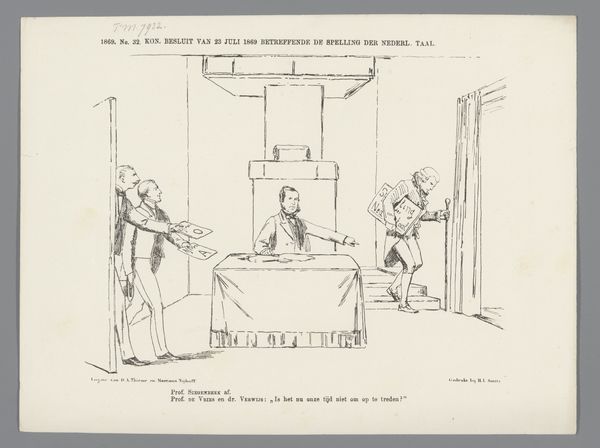
Spotprent op de schoonmaak op het Ministerie van Koloniën, 1863 1863
0:00
0:00
drawing, print, pen
#
drawing
#
aged paper
#
16_19th-century
#
quirky sketch
#
narrative-art
# print
#
caricature
#
old engraving style
#
sketch book
#
personal sketchbook
#
idea generation sketch
#
sketchwork
#
line
#
sketchbook drawing
#
pen
#
genre-painting
#
history-painting
#
storyboard and sketchbook work
#
sketchbook art
Dimensions: height 215 mm, width 275 mm
Copyright: Rijks Museum: Open Domain
Curator: Look at the sparseness of the linework here; the figure pushing the holystone, those faint faces peeking out… Editor: Yes, it’s certainly striking. This is a print titled "Spotprent op de schoonmaak op het Ministerie van Koloniën, 1863" created in 1863 by Johan Michaël Schmidt Crans. It uses pen and ink, and given the title, one presumes that the image takes cleaning the deck as a kind of extended metaphor for governmental reform. Curator: It’s fascinating how the artist employs these stark lines, creating a sense of space almost entirely through perspective, relying only minimally on tonal variation. The aging paper really emphasizes its nature as a quickly produced political cartoon. I am also intrigued by the almost theatrical staging here. The sailor's labor takes center stage, framed, really, by the more passively situated figures. Editor: The figure aloft could be an angel or at least some allegorical representation of moral judgement overseeing the arduous scrubbing on deck, couldn't it? The cleaning of a ship as a kind of moral cleansing? Curator: Perhaps. It speaks to a visual vocabulary shared by the artist and their contemporary audience. But what kind of labor are we really depicting here? Who profits from all this scrubbing and what commentary might it make about Dutch colonial ventures? The cleanliness the artist is representing feels almost inherently suspect. The materials really underline how topical this image was designed to be and the artist's chosen style emphasizes an economy of production which allows them to get their political point across quickly. Editor: An interesting angle! But doesn't the figure, posed so resolutely in the foreground, also signify an active drive for positive change? The figures in the shadows may represent a reluctance towards reform or an awareness of wrongdoing. The bucket suggests a willingness to confront "dirt", both literal and metaphorical. And is that small cannon further back in the ship included for any reason? Curator: Could be for some sense of visual scale, or perhaps its placement might serve as a kind of understated visual threat. But given the state of the print today, one also really has to marvel at how something designed to be so ephemerally topical continues to provoke such thoughts today! Editor: Absolutely, a testament to how images, even those dashed off in pen and ink, can speak across time and cultures.
Comments
No comments
Be the first to comment and join the conversation on the ultimate creative platform.

